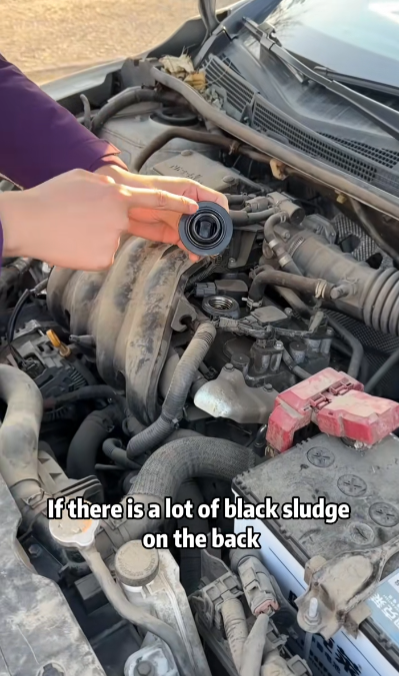
Buying a used car can be a smart financial decision, but it also comes with risks. Unlike a brand-new vehicle that comes with a manufacturer’s warranty and a pristine condition, a pre-owned car may have hidden problems that could cost you thousands of dollars in repairs. Therefore, being thorough before making a purchase is crucial. To ensure you make a safe investment, here are five essential things you must check before buying a used car.
1. Vehicle History Report
One of the most important steps in buying a used car is checking its history. A vehicle history report provides vital information about the car’s past, including:
- Accident history: A car that has been in a major accident could have structural damage, even if it looks fine on the outside.
- Number of owners: If the car has changed hands multiple times, it may indicate potential problems.
- Service records: Regular maintenance and service history show that the car was well taken care of.
- Odometer readings: A vehicle history report can help verify if the mileage is accurate or if it has been tampered with.
- Title status: Check if the car has a clean title. Avoid vehicles marked as “salvage” or “rebuilt” unless you are fully aware of the issues.
Websites like Carfax or AutoCheck can provide these reports for a small fee. While it might seem like an extra expense, it’s far cheaper than buying a car with hidden issues.

2. Mechanical and Physical Condition
Before buying any used vehicle, inspect it thoroughly. Ideally, bring a trusted mechanic to examine the car for hidden mechanical problems. If that’s not possible, perform these checks yourself:
- Engine condition: Look for leaks, strange noises, or excessive smoke. An engine with knocking sounds or oil leaks might indicate serious problems.
- Transmission: Check if the car shifts smoothly. Rough or delayed shifting could mean transmission trouble.
- Brakes and suspension: Test drive the car and listen for squeaking, grinding, or vibrations when braking. Also, check if the car rides smoothly or feels bumpy.
- Tires and alignment: Uneven tire wear could indicate alignment issues or suspension damage.
- Rust and body damage: Look for rust on the undercarriage, wheel wells, and door edges. Rust is a sign of poor maintenance or exposure to harsh conditions.
- Dashboard warning lights: During the test drive, see if any warning lights are on. A lit “Check Engine” or “ABS” light should never be ignored.
If the seller hesitates when you suggest a professional inspection, consider it a red flag.

3. Mileage vs. Age of the Car
The mileage of a used car is one of the most important factors when determining its value and remaining lifespan. Generally, a car is driven around 12,000 to 15,000 miles (20,000 to 24,000 km) per year. When inspecting the car, ask yourself:
- Does the mileage match the car’s age?
For example, a five-year-old car with 100,000 miles might be considered high mileage, while the same car with 30,000 miles could be a great find. - Does the mileage match the car’s condition?
If the odometer shows low mileage but the interior and exterior look worn, it could be a sign of tampering or rough use.
Cars with extremely low mileage can also be risky if they’ve been sitting unused for long periods. Unused vehicles can develop mechanical issues, such as dried-out seals and degraded fuel systems.
4. Ownership Costs (Insurance, Fuel, and Maintenance)
A used car may have a low purchase price, but what about the ongoing expenses? Before buying, research the model’s long-term costs, such as:
- Insurance premiums: Some cars, especially luxury or sports models, have high insurance rates.
- Fuel economy: Older cars might not be as fuel-efficient as newer models.
- Maintenance and repair costs: Check online reviews to see if the car model is known for reliability or expensive repairs. Brands like Toyota or Honda often have lower maintenance costs, while luxury cars might require costly parts and services.
- Availability of parts: If the car is a discontinued model or imported, finding replacement parts could be expensive and time-consuming.
You should calculate these costs in advance to avoid unexpected financial burdens.

5. Test Drive and Documentation
A test drive is not just a formality—it’s your chance to see how the car performs in real-world conditions. During the test drive, check:
- Starting and idling: Does the car start easily? Does it idle smoothly without vibrations or unusual noises?
- Steering and handling: Does the steering feel stable? Is there any pulling to one side?
- Acceleration and braking: Test how the car accelerates and brakes under normal and sudden conditions.
- Noise and comfort: Listen for rattles, squeaks, or wind noise. Pay attention to comfort, especially if you plan to use the car for long drives.
After the test drive, make sure all documentation is in order:
- Registration papers – Verify that the seller is the legal owner.
- VIN (Vehicle Identification Number) – Ensure the VIN on the car matches the documents.
- Service records – A well-documented maintenance history is a positive sign.
- Warranty (if any) – Some used cars still have part of the manufacturer’s warranty.
Bonus Tip: Negotiate Smartly
Once you’re confident about the car’s condition, it’s time to talk price. Do your research by checking online pricing guides like Kelley Blue Book or Edmunds to understand the car’s fair market value. Use the information you gathered during the inspection to negotiate—if you found worn tires or minor cosmetic issues, bring these up to get a better deal.
Conclusion
Buying a used car doesn’t have to be stressful if you know what to look for. By checking the vehicle history, inspecting its condition, comparing mileage with age, evaluating ownership costs, and taking a proper test drive, you can avoid costly mistakes. Always remember to trust your instincts—if something feels wrong, walk away. There will always be another car that’s a better fit for your needs and budget.
A well-inspected used car can serve you reliably for years while saving you a significant amount of money compared to buying new. With careful research and patience, you’ll find the perfect pre-owned vehicle that meets your expectations.



